People
‘Her Legacy Has Only Just Begun’: Luchita Hurtado, the Protean Artist Who Gained Renown in Her Final Decade, Has Died at 99
Hurtado's death, at age 99, was confirmed by her gallery, Hauser & Wirth.
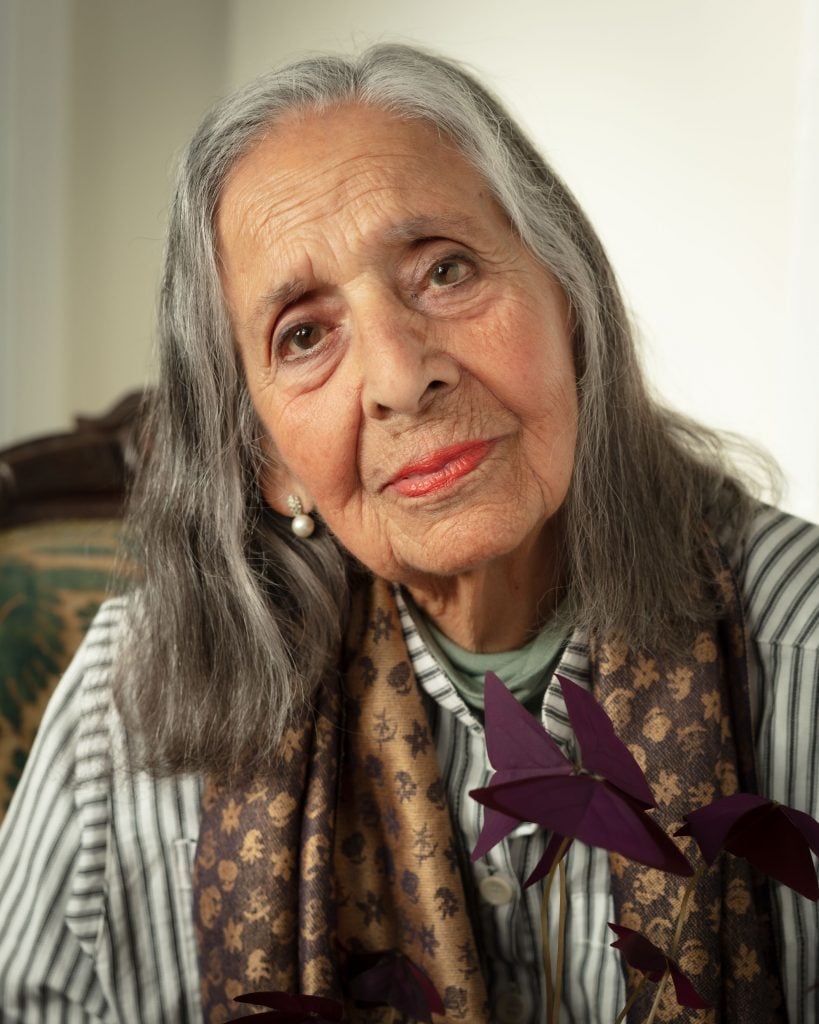
Hurtado's death, at age 99, was confirmed by her gallery, Hauser & Wirth.

Naomi Rea

The Los Angeles-based artist Luchita Hurtado, whose 80 years of extraordinary artistic output was only recognized in the final chapter of her life, has died at age 99. The artist’s death was confirmed on Friday by her gallery, Hauser & Wirth.
Throughout her career, Hurtado’s paintings, drawings, photographs, and prints danced between abstraction and figuration, dabbled in Surrealism, and forged a unique visual language that invoked a near-spiritual interconnectedness of the body and the natural world.
She ran in circles with some of the greatest artists and intellectuals of the 20th century, including Marcel Duchamp (who once gave her a foot rub), Rufino Tamayo (who painted in her kitchen in New York), Frida Kahlo and Diego Rivera, the protagonists of the Surrealist movement in Mexico, and members of the Dynaton group in San Francisco. All the while, she maintained a fierce independence in her own practice, which transcended any particular group.
Unlike her friends, Hurtado’s life story was not characterized by international renown. She worked in obscurity for nearly 70 years before a turn in fortune saw her recognized as a luminary by the institutional art world in her final decade.
“The world lost one of the great artists today,” Hans Ulrich Obrist, artistic director of the Serpentine Gallery, tells Artnet News.
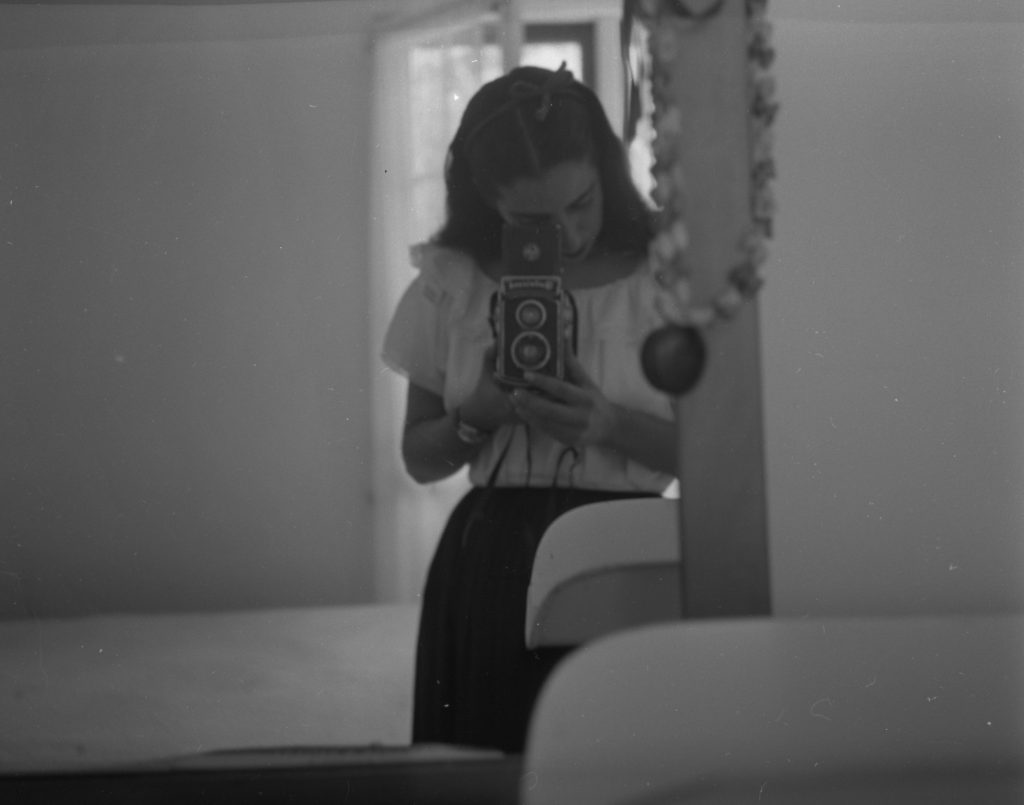
Luchita Hurtado, Santa Monica, California 1951. ©Luchita Hurtado. Photo by Luchita Hurtado.
Hurtado was born on the outskirts of Caracas in Maiquetía, Venezuela in 1920. She spent her early years immersed in nature before her family emigrated to New York when she was eight years old. After graduating high school, she worked for a spell at the Spanish-language newspaper La Prensa, where she met her first husband, the Chilean journalist Daniel del Solar. They married in 1938, when Hurtado was 18 years old, and had two children. But del Solar turned out to be “a very unreliable man,” Hurtado told Artnet News in a 2018 interview, and abandoned the family.
She later became a fashion illustrator and designer and fell in love with her second husband, the Austrian Surrealist painter Wolfgang Paalen, in the mid-1940s. Together, they moved to Mexico City, where she was introduced to Kahlo, Roberto Matta, and the Mexican muralists, and other leading artists.
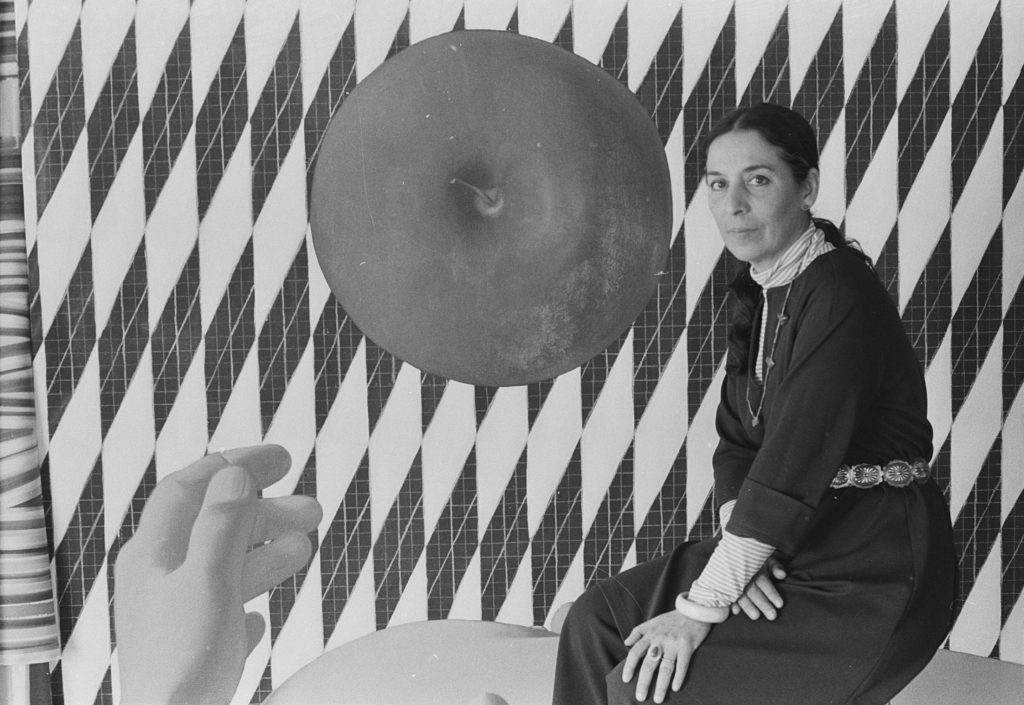
Luchita Hurtado, Santa Monica, California, 1973. ©Luchita Hurtado. Photo by Matt Mullican.
After her young son Pablo died of polio, which Hurtado described as “one of the most tragic moments of my life,” she and Paalen left Mexico City for California. There, she was introduced to artists who would become the Dynaton group, including her third partner, Lee Mullican, who she started seeing in the early 1950s, and with whom she had a third son, the artist Matt Mullican, followed in 1962 by her fourth, John. In 1951, the family settled in Santa Monica, California, which remained her base until her death.
Throughout this time, Hurtado was quietly making her own work, often waiting until after her children were asleep to toil through the night. In the 1940s and ’50s, she made abstract works inspired by tribal and pre-Columbian themes, but later embraced a more figurative and Surrealist style, exemplified by a series of sensual nude self-portraits painted from her own perspective as she stood upright.
Sublime nature and the joys of motherhood are recurring themes, as is the sacredness of the natural environment. The climate emergency was something she spoke passionately about until the end, opining in 2019, “We live in a very limited world and we’re doing away with it in a very systematic way. We should all be concerned.”
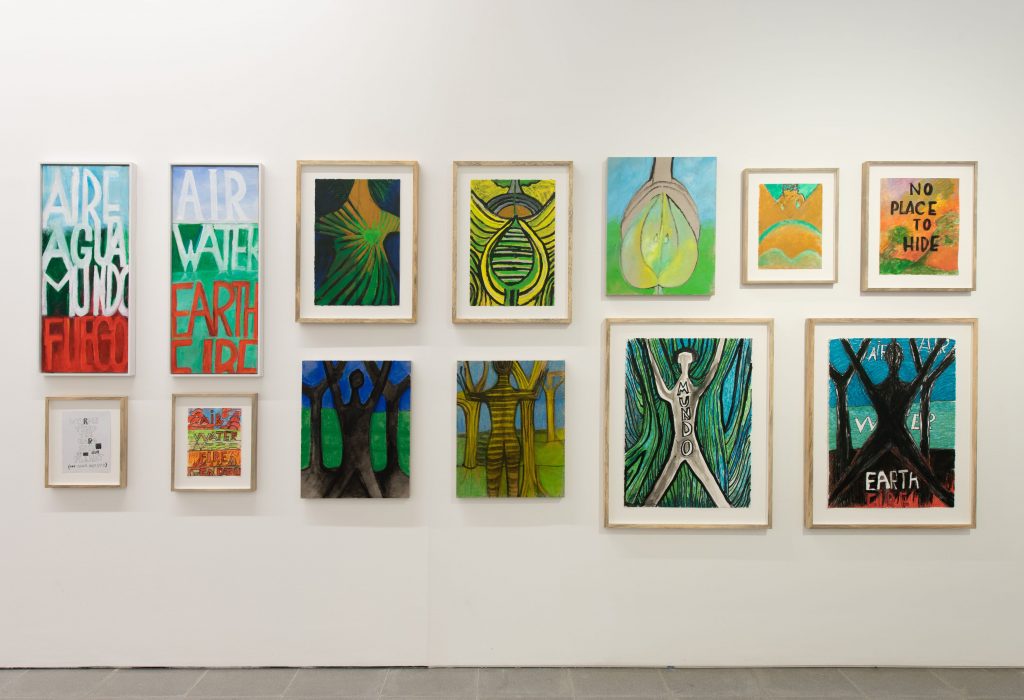
Installation view, “Luchita Hurtado: I Live I Die I Will Be Reborn,” Serpentine Galleries, London, England. 2019. ©Luchita Hurtado. Photo by Hugo Glendinning.
Hurtado was a founding member of the Los Angeles Council of Women Artists and her first solo exhibition was in 1974 at Grandview One gallery in the Woman’s Building. But this remained her only solo outing until some of her work was re-examined within Mullican’s estate after his death.
In 2016, she had a show at LA’s Park View gallery. It did not take long after that for institutional success to come thick and fast. In 2018, she was included in the Hammer Museum’s “Made in LA” biennial, and the following year was named as one of TIME magazine’s 100 most influential figures.
Hurtado had her first international museum retrospective at the Serpentine Sackler Gallery in London in 2019. “I Live I Die I Will Be Reborn,” which toured to the Los Angeles County Museum of Art earlier this year, charted her stylistic experimentation over the decades.
Hans Ulrich Obrist of the Serpentine first met Hurtado on a studio visit in the beginning of 2017. “I was so amazed by the work we saw, but also by the fact that she had so many dimensions to her practice,” Obrist says. “In a one-hour studio visit, I not only discovered her as an extraordinary painter who has 80 years of painting that she had never really exhibited, but also as an extraordinary photographer, an amazing clothing designer, a poet, diarist, and ecological activist.”
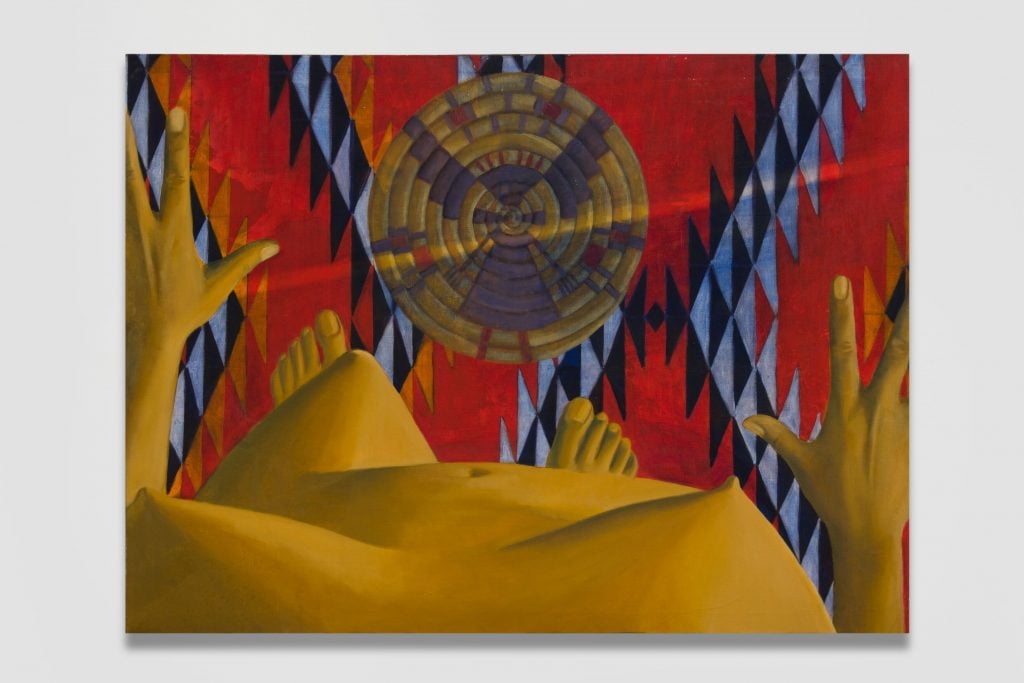
Luchita Hurtado, Untitled (1969). ©Luchita Hurtado. Courtesy the artist and Hauser & Wirth. Photo by Jeff McLane.
Obrist spent many hours talking with Hurtado for a book of conversations he is working on, and recalls how she was undaunted by her many years of anonymity. “She always knew that the moment would come that she would be recognized, and when it did she was absolutely ready, and she enjoyed every minute of it,” the curator says. “Her legacy has only just begun.”
Hurtado continued making work right up until the end, and the gallery says that some of her final paintings offered visions of a meeting place of sky, mountains, and water. In others, she imagined herself melting into the landscape to regenerate the earth.
Speaking to Artnet News in 2018, Hurtado was unafraid to contemplate death. “I don’t think it’s going to be the end,” she said. “I think there are just borders in this existence. I think it goes on—I expect to fly, at some point.”